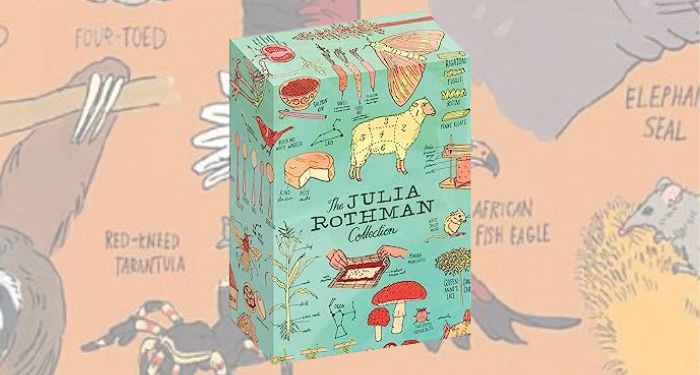Products You May Like
How many adults read comics? My quick perusal of the research found a lot of older studies, but approximately six percent of millennials read comics every month.
How many adults talk about reading comics publicly?
What about graphic novels? Or graphic nonfiction?
Comics and graphic novels aren’t always seen as “reading,” even for kids. Parents, adults, and even educators fall back on tropes about how it’s not “real” reading, when in fact, the benefits of graphic novels have been long known: they can help engage reluctant readers, build vocabulary, help those with learning difficulties or diagnosed learning disabilities, encourage interaction with the text, and much more. Even for adults, graphic novels can help revitalize a reading slump, add interest to a challenging text, and make complex concepts similar by adding a visual component.
But graphic nonfiction…sounds much more “literary,” though I hate that term. It conveys a seriousness to the story or book. It’s often an apt descriptor, yes — but so might be “comic strip,” defined in Merriam-Webster as “a series of cartoons that tell a story or part of a story.”
The words we use to describe things are important and can convey a lot about how we see things, how we want them to be seen, and what we want something to embody.
Julia Rothman’s books are perfect examples of this. I love her books, as does my 7-year-old son. We’ve loved her books for years. Both of us get a lot out of them: they’re packed with information, but the illustrations make the concepts accessible. But nowhere are these referred to, that I can see anyway, as graphic novels, graphic nonfiction, or comics. They’re “illustrated guides.” Which is true, yes. But to me, they’re also graphic nonfiction. Amazon categorizes them as “art encyclopedias” and “outdoors and nature reference.”
Many people see those books as children’s books; however in one exchange I had with a publicist for the books for work, I was told that the publisher considers them adult books. Tell that to the myriad of homeschoolers who consider them cornerstones of their children’s nature education.
Lucy Knisley’s graphic memoir Relish has been described as a memoir illustrated with cartoons. Amazon categorizes this one as “culinary biographies and memoirs” and “gastronomy essays (books).” Robin Ha’s Cook Korean! has the subtitle “A Comic Book with Recipes.” This one is categorized as “Korean cooking, food, & wine” and “educational and nonfiction graphic novels.” Persepolis by Marjane Satrapi is described by the publisher as a graphic memoir, but then it goes on to call the illustrations “comic strip images.” Amazon describes this book as “biographies & history graphic novels,” “women’s biographies,” and “memoirs (books).”
Are these cartoons, comics, graphic novels, graphic memoirs, all of the above, none of the above? Does it matter? They’re all graphic nonfiction but clearly, also seen as different from one another, and even though Ha’s book has “comic book” in the subtitle, not classified as such by Amazon.
Should any of this matter? I don’t know.
If adults willingly share these books as books they’re currently reading, are they also as forthcoming about reading the new Jessica Jones trade paperback, or a favorite Ms. Marvel run? If not, why? At their heart, they’re all illustrated stories, right? Why are some seen as more “elevated” or worthy than others? Why are comics — the traditional comics that we think of when we hear “comics” — often seen as child’s play?
Perhaps it’s the format. Or the superhero themes, even though these often provide incisive social and political commentary on current events. Traditional comics often deal with a lot of the same issues some lauded graphic nonfiction has dealt with: family rifts, intergenerational trauma, war, loss, disability, loss. The writing may be different but the emotional pull on the reader is present in both reading experiences. I can only think that maybe it’s the stereotypes that comics have never quite been able to break out of. Or rather, the stereotypes that people keep insisting on despite ample evidence to the contrary. That might be a better way of stating it.
Me, personally? I think there’s still a bias against comics and graphic novels. I think this has reached into the genre itself so that some authors and/or publishers of graphic nonfiction seek to distance themselves from graphic novels by insisting that they’re “illustrated books/guides,” or stores and publishers classify them as something else, instead of comics or graphic nonfiction. I don’t have all the answers, and there’s a lot to unpack here — who’s making the classifications, who’s choosing the marketing language, and much more — but it is certainly interesting to think about how differently comics may be received from graphic nonfiction or graphic novels.
What do you think? Is there still a bias against comics, graphic novels, and graphic nonfiction? Does this change based on the intended audience of the book?
If you want to check out some graphic nonfiction to decide for yourself, check out this post on political graphic nonfiction and memoirs, and this post on 10 graphic nonfiction books for curious minds.
